
Is there anything more embarrassing than measuring your windows wrong when you work for Blinds.com?
I recently ordered some white faux wood blinds for my guest bedroom, prepping for my parents who were coming to visit. I could have sworn that I checked the measurements multiple times. But, when they arrived I had somehow written a number down wrong and the width was 2 inches too narrow. When I tried to install the blinds, they wouldn't fit in the brackets and just fell out of the window.
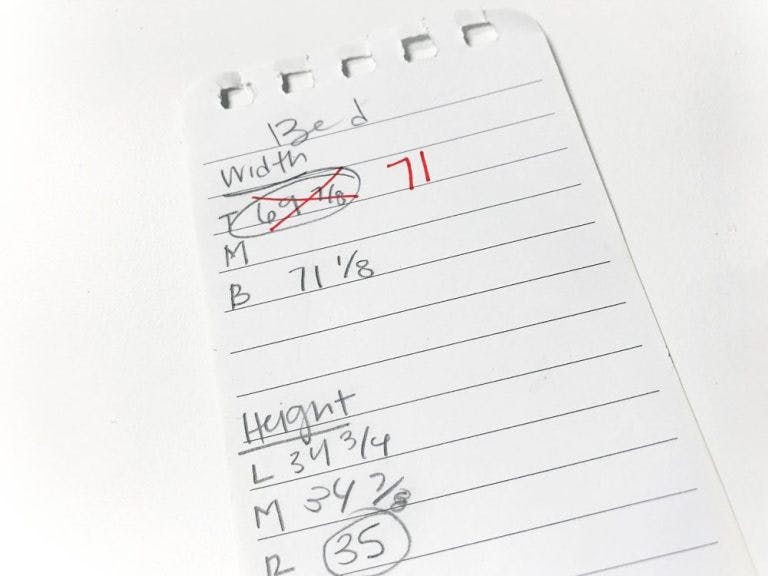
Luckily even dummies like me are covered by the Blinds.com SureFit Guarantee. After I collected my bruised ego, I called into the customer service team and spoke to a real human in Houston, TX who double checked my (now correct) measurements. In just a few minutes, they had a new blind headed my way, at no cost to me. All I had to do was donate my old blinds to a charity like the Habitat for Humanity ReStore.
Now, I say all of this not to scare anyone away from measuring their own windows. You can absolutely do it on your own! But to help you learn from my mistake, I went on a mission to find the top measuring mistakes and how to avoid them.
Not a DIYer, and prefer to leave the measuring and installation to a pro? Find out about professional services in your area!
How to Measure for Custom Window Coverings
The exact steps for measuring windows can vary slightly depending on what style of window treatment you choose. So, before you pull out the tape measure, be sure to narrow down your choices to the style of window covering you'd like to order.
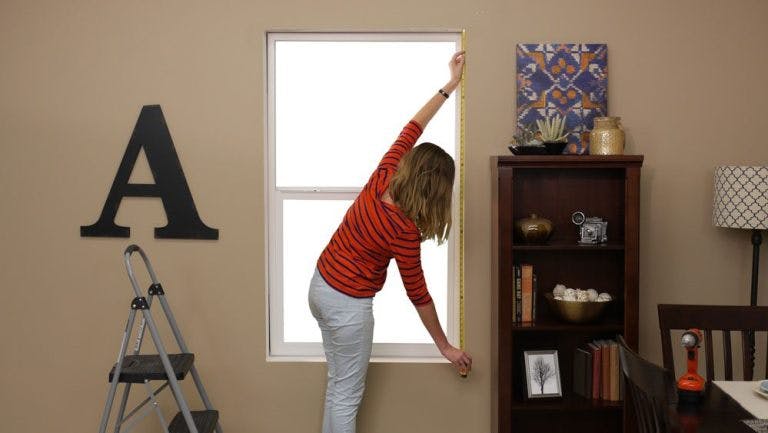
Once you have your selection made, follow the measuring instructions for your specific product here: Blinds.com Measuring Guides.
11 Common Window Measuring Mistakes
As we just mentioned, the most important thing is to follow the measuring instructions for the specific style of window coverings you are ordering. However, we'll share some common mistakes that apply to most styles.
1. Assuming That Similar Windows Are The Same Size
Let's set the record straight, there is no such thing as a "standard size" window. Just because all the windows in your room look like they are about the same size doesn't mean that you can measure one and that size for the whole order.
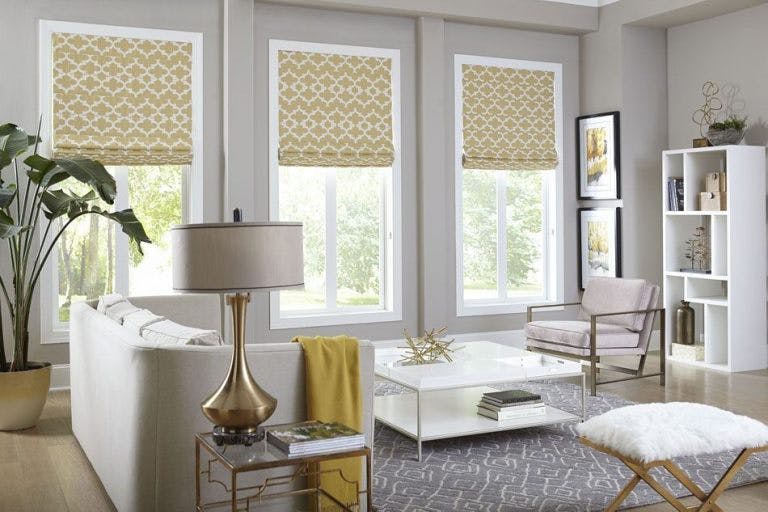
Blinds.com makes all of our products to your exact measurements, down to the 1/8". Windows can have small variations due to framing or your house settling over time. That being said ALWAYS measure each window separately for your order.
2. Measuring The Size You Want Your Blinds To Be, Not the Size Of The Window Opening
When you order inside mount window coverings from Blinds.com, we always ask for the EXACT size of the window opening, edge to edge. Some people may make their measurements slightly smaller thinking that their blinds need to be slightly smaller to fit in the window. This is the BIGGEST MISTAKE our designers hear about from upset customers and will lead to blinds that don't fit.

You're right in thinking that your blinds need to be slightly smaller than the window. But, all of our blinds and shades require slightly different deductions to height and width for the perfect fit. To keep things simple for our customers, we do all of those calculations for you at the factory. Just give us the exact size of the window opening and we'll make blinds that fit perfectly.
3. Measuring The Old Blinds Rather Than The Window Opening
Similar to #2, some people assume that if they measure the old blinds in their window, they'll receive the exact same size. However, the measurements are based on the window opening and will come in too narrow if you do this. Use the technique in #4 to get it right.
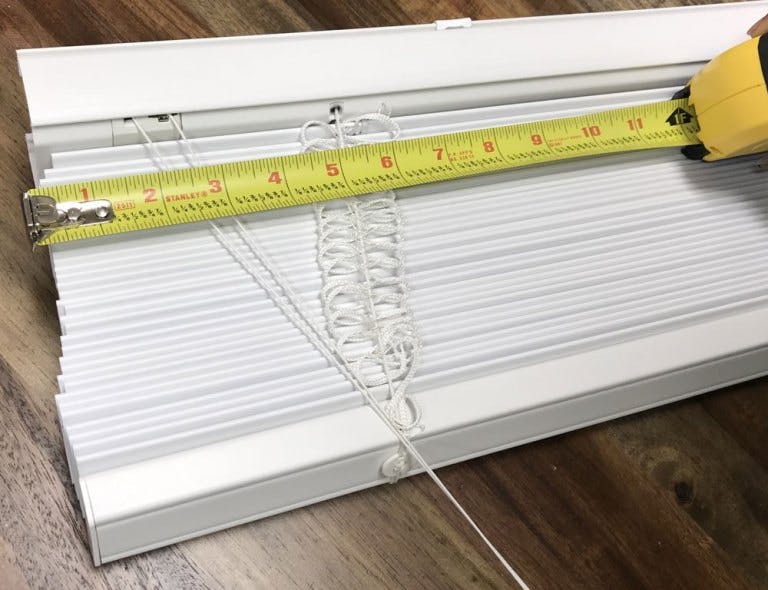
Also, don't assume that you can re-use the old brackets or simply measure the distance between the brackets. Always measure the window opening from edge to edge.
4. Not Measuring In 3 Places
One of the most important steps is to measure both the height and width in 3 places - top, middle, and bottom. This allows you to be sure your blinds will fit, even if your windows are a different size at the top or bottom of the opening. Just as we said that no 2 windows are the exact same size, it's rare to find a window that's perfectly square.
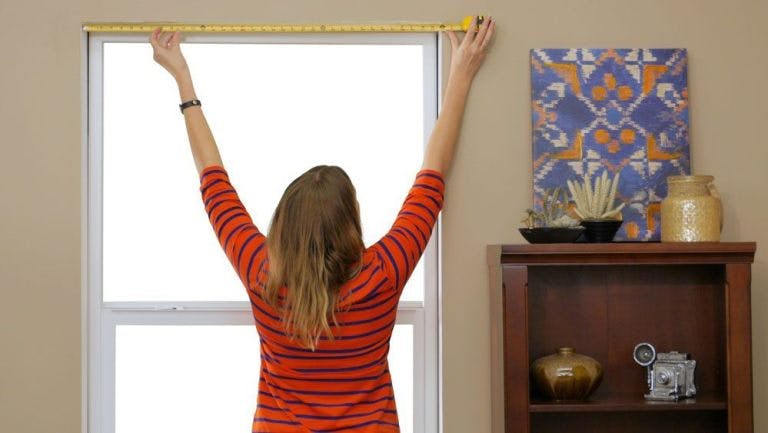
If your windows are tall and the top is out of reach, it's still important to get out a ladder and measure at the very top. You'd hate to skip that step and not have blinds that fit.
Record all of these measurements on the Blinds.com Measuring Worksheet and then use these guidelines to choose the right measurement.
Width:
- For Roller Shades, Solar Shades, Sheer Shades, or Vertical Blinds use the measurement from the top of the window.
- For all other styles, use the narrowest width measurement of the top, middle and bottom.
Height:
- For Roller Shades, Solar Shades, Sheer Shades, or Vertical Blinds choose the shortest height.
- For all other styles, use the longest height.
5. Not Using A Steel Measuring Tape
When measuring your windows, because we make your window treatments to the 1/8", it's important to have super accurate measurements. A ruler, yardstick, cloth tape measure for sewing or just eyeballing it won't do!

The only way to get correct measurements is to use a steel tape measure. Also, be careful with the pocket-sized freebie ones you may have lying around. These can be less accurate than what you find at the home improvement center. If you don't have one, pick up a full-sized tape measure for about $10 and rest assured that you'll be measuring accurately.
6. Bending The Measuring Tape
You may think that the only way to measure inside an opening (like your window) is to bend the tape measure and try to guess what tick mark is in the middle of the curve. Even though you've seen TV woodworkers do this, it's a big no-no if you want accurate measurements.
Instead, we've got a secret to share with you. Look at the back of your tape measure for a small number. This gives you the exact size of the tape measure housing.
If your tape measure doesn't have a number like this, it may be low quality and less accurate. It's probably worth it to pick up a name brand one from the store. Trust us, it'll come in handy for lots of future projects.
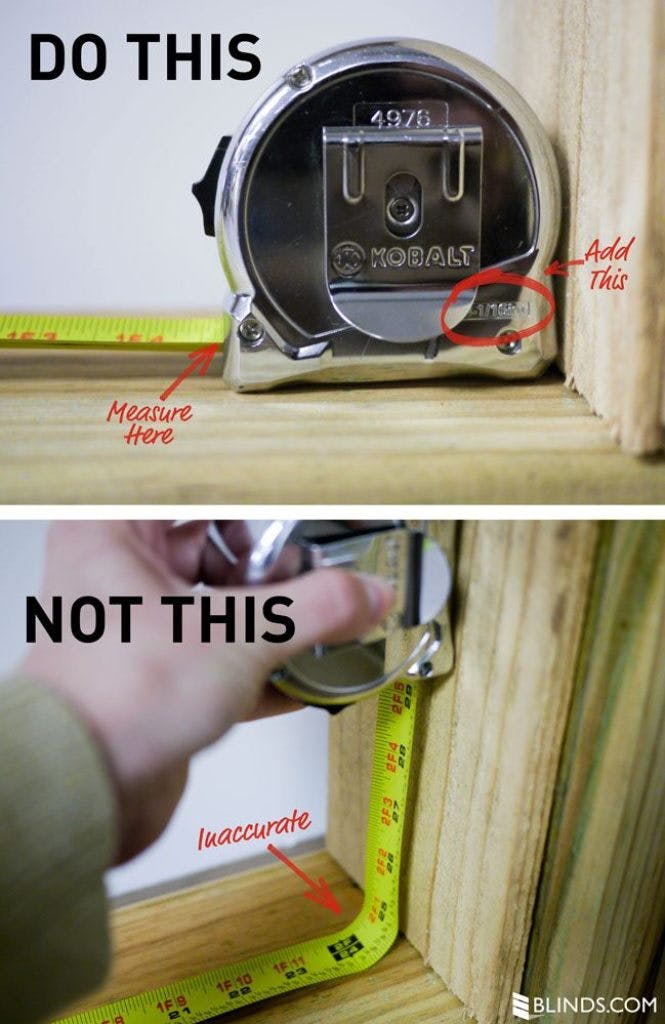
Here's how you use that little number to get an accurate inside measurement. Rest the metal end of your tape measure on one side of the window frame and extend until the housing rests on the other side. Note the measurement on the tape and then add the number from the back of the housing.
Check out more hidden tape measure features:
7. Not Reading The Tape Measure Correctly
If you're not an experienced woodworker, you may not have looked closely at the tick marks on a tape measure or ruler since grade school. And that's ok, we've got a refresher course for you.
When you read the tape measure, simply count the hash marks after the last big number and use the chart below to find the correct fractional measurement.
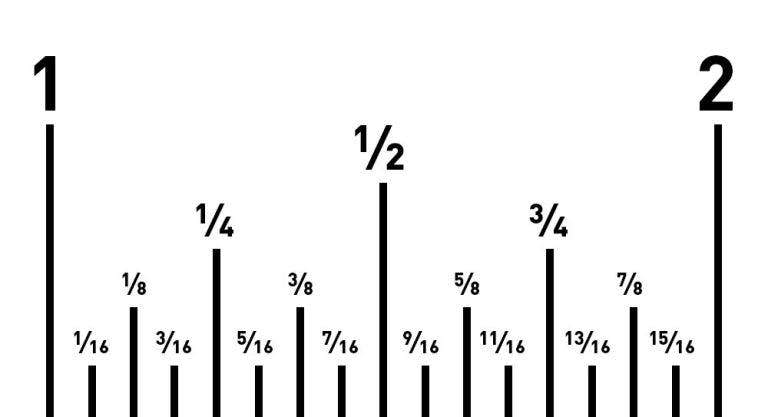
When you have your measurement (be sure to follow #6 as well), if it's a 16th, round down to the nearest 1/8". For example, if you measure 7/16", round down to 3/8".
8. Not Measuring Depth
For an inside mount, width and height are not the only measurements that matter for your windows. Depth is essential for determining if your blinds will protrude out of the window, or if they can be mounted at all.

Measure your window depth from the glass to the edge of the window opening. Then check the product specification section on your product page to find the minimum inside mount depth dimension. This is the minimum depth you'll need to install your product. If your windows are too shallow, call us at 800-505-1905 for help finding a product that will work for your window.
When measuring, also check to see if there are any obstructions in your window opening, like a security sensor or crank handle. Measure your depth from the edge of the obstruction forward and then compare to the minimum inside mount depth dimension.
9. Not Adding Width To Outside Mount Blinds
Measuring for outside mount blinds is a different process. In this case, you won't measure the size of the window opening, but the exact size that you would like the product to be.

Because you're mounting the blinds outside the window on the wall above, they need to be slightly wider and taller than the opening. We recommend going at least 2" wider than the opening on either side, so 4" total. For the height, go about 3 inches above the window trim (to allow for the mounting brackets) and measure from that point down to the window sill.
Without adding these extra inches, your window covering may have gaps on the side where light shines through, or not fully reach the window sill.
10. Mixing Up Width And Height
You wouldn't believe how often people get the wrong size blinds simply because they mixed up the width and height.
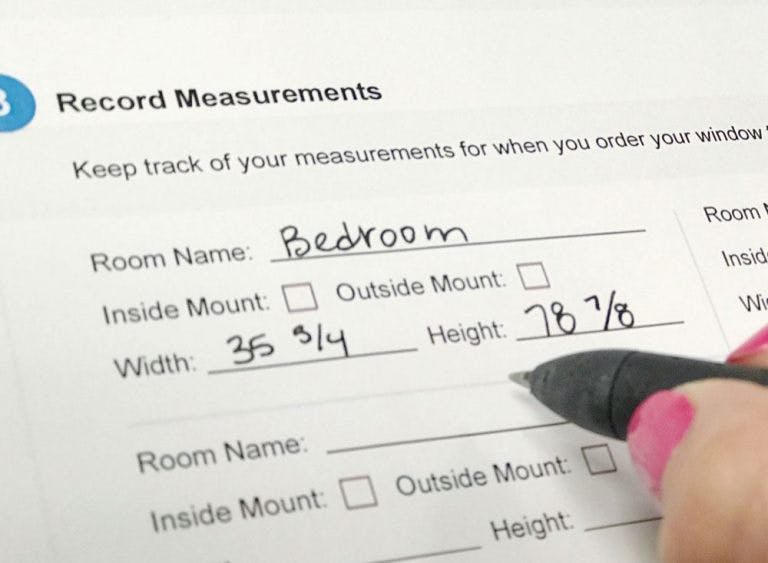
An easy way to avoid this mistake is to use the Blinds.com Measuring Guide and double check your measurements. (See #11)
11. Not Checking Your Measurements Twice
Before you place your order, it's always a good idea to double check your measurements. As they say in the building trades, "Measure twice, cut once." Make sure that you read the tape measure correctly, measured in 3 places, selected the right measurement of the 3, didn't mix up width and height, and that you transferred your measurements to your Blinds.com order correctly.
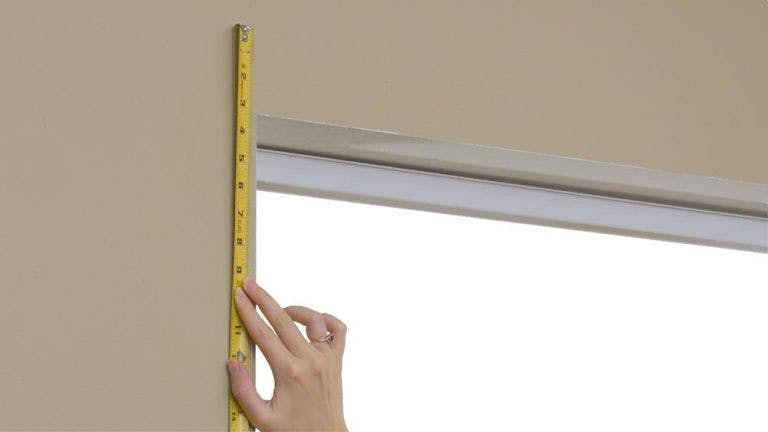
You're Ready to Measure!
With all this in mind, you should be able to measure for blinds accurately and get a perfect fit. But hey, mistakes happen. If something goes wrong, you're always backed by our SureFit Guarantee.
If you're ready to get started, find the specific measuring instructions for your window treatment style here.
Need More Help?
Is all this sounding too overwhelming? Blinds.com designers are here to help walk you through each step, or to connect you with a professional installer in your area. Give us a call at 800-505-1905 for help.

